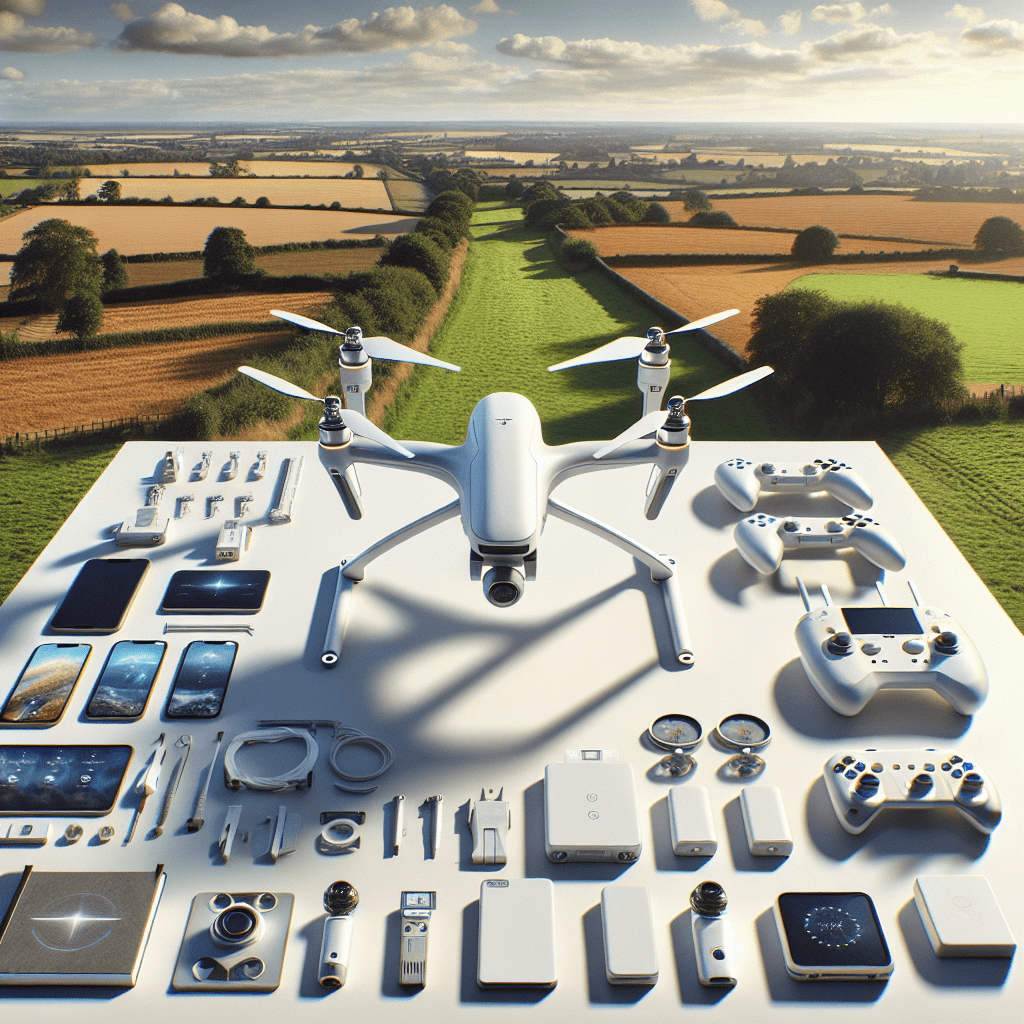Drone Comparison: Best MEMAERO Models Side-by-Side
In This Article
- Drone Comparison starts with defining your skill level and intended usage.
- MEMAERO offers beginner to professional drones—from Aero 1 Lite to Aero X Pro.
- Camera quality varies with model; Aero 3 Lite stands out with 4K and a three-axis gimbal.
- All models feature dependable GPS stabilisation, with Aero X Pro offering RTK-level accuracy.
- User-friendly controls make Aero 1 Lite ideal for new pilots.
- Battery life spans from 25 to 40 minutes depending on the model.
- Interactive buying tool aids decision-making with AI-driven guidance.
- Compared to DJI, MEMAERO drones often provide comparable specs at reduced cost.
- Understanding C1 vs C2 drone classifications is vital for compliance.
- Your perfect MEMAERO drone should balance price, needs, and future ambitions.
we help you navigate MEMAERO’s top models—including Aero 3 Lite, Aero 1 Lite and other variants—defining which model best fits your skill level and intended use. From camera quality to GPS accuracy and flight stability, we thoroughly examine every essential detail.
How to Choose the Right MEMAERO Drone
Identify Your Skill Level and Use Case
When embarking on a Drone Comparison, it’s critical to consider your level of experience and the use case you’re targeting. MEMAERO has crafted a diverse portfolio that caters to novices, hobbyists, and professionals alike. Beginners may prioritise user-friendly interfaces, failsafe mechanisms, and stabilisation systems, whereas professionals could seek high-end imaging capabilities, enhanced range, and advanced GPS options.
For instance, if you’re a travel blogger aiming to capture high-quality aerial videos, a MEMAERO model equipped with a 4K camera and obstacle avoidance might be ideal. Conversely, a casual user who simply wants to explore drone flight will benefit more from a lightweight, cost-effective option with decent stability and automated return-to-home functionality.

Top MEMAERO Drone Models Compared
Aero 3 Lite, Aero 1 Lite & More
As part of our detailed Drone Comparison, let’s examine MEMAERO’s flagship models. The Aero 3 Lite represents the latest evolution in their lightweight smart drone series. Lauded for its blend of affordability and performance, it introduces a three-axis gimbal for smoother footage and an enhanced battery capable of up to 35 minutes of flight time. It features a 24-megapixel camera capable of 4K UHD recording and supports real-time transmission up to 6 km.
Next is the Aero 1 Lite, a compact and beginner-centric model. Though smaller in dimension, it still impresses with a 2K camera, 25-minute battery life, and built-in electronic stabilisation. Its portability has made it particularly popular among recreational users and social media content creators.
For more advanced users, MEMAERO also offers the Aero X Pro, designed for commercial applications such as mapping, surveying, and agricultural monitoring. It combines AI-assisted flight with thermal imaging and a larger battery, emphasising power and precision.
“MEMAERO’s Aero 3 Lite strikes an exceptional balance between cost and capability, making it a top choice in the intermediate drone segment.”
Camera Comparison and Image Quality
In this Drone Comparison, image quality is a non-negotiable component for many users. The Aero 3 Lite features a Sony IMX sensor, offering more vibrant colour reproduction and superior dynamic range. Its ability to shoot in 4K UHD at 30fps, combined with the three-axis mechanical gimbal, ensures stable and film-grade results.
The Aero 1 Lite, while less powerful, still manages good image performance with a 2K resolution that’s ideal for casual photography. The electronic image stabilisation helps reduce jittering in windy conditions, though it doesn’t fully match the physical gimbal’s performance in the Aero 3 Lite.
On the high end, the Aero X Pro includes a dual-camera system that pairs a 48MP visual camera with a 640×512 thermal sensor. This dual system is crucial for professionals in construction, agriculture, and search-and-rescue operations.
Flight Stability and GPS Accuracy
MEMAERO’s GPS-assisted hovering sets their drones apart. In our Drone Comparison, flight stability is consistently excellent across mid- and high-tier models. The Aero 3 Lite taps into both GPS and GLONASS systems for superior global positioning. During testing, it maintained accuracy within 30cm during autonomous flight routines.
The Aero 1 Lite uses a simplified GPS module, which performs reasonably well in open areas, though it’s slightly less reliable in urban environments with strong radio interference. Meanwhile, the Aero X Pro benefits from RTK (Real-Time Kinematic) modules, delivering centimetre-level precision—ideal for applications requiring ultra-accurate data.
Ease of Use: Beginner-Friendly Controls
Not all drones are created equal when it comes to usability. MEMAERO has heavily invested in UI/UX improvements. In this Drone Comparison, the Aero 1 Lite emerges as the most user-friendly model. Its auto-takeoff, smart return-to-home, and tap-to-fly functions simplify operations dramatically.
The Aero 3 Lite adds programmable waypoints and gesture control, making it a logical step up for those ready to evolve. Meanwhile, the Aero X Pro’s interface requires more familiarity and training but rewards users with unparalleled control options and mission planning tools.
MEMAERO’s FlyWell app supports all their drones and has received high praise for intuitive design and airspace warning integration. Learn more about Drone Comparison & Buying Guides
Battery Life and Charging Efficiency
Evaluating battery longevity in any Drone Comparison is essential. The Aero 3 Lite stands out with its 4,000mAh intelligent battery, offering up to 35 minutes of real-world flight. The fast-charging module powers it from 0 to full in approximately 75 minutes.
The Aero 1 Lite, with its 2,600mAh unit, provides around 25 minutes of flight—decent for casual sessions. Charging time is longer at 90 minutes, largely because of its lack of a fast-charging protocol.
In contrast, the Aero X Pro includes dual-slot batteries, each lasting 40 minutes. The accompanying multi-charging dock improves field performance, especially useful for extended missions or commercial jobs. Read a related article
Interactive Buying Guide and Tool
MEMAERO’s online platform enhances customer decision-making through an interactive comparison tool. This web-based utility enables real-time filtering by priority features—camera type, battery life, size, and even weather resistance ratings.
One of its standout features includes AI-powered recommendations, which calculate a match score based on your responses. Have you input your skill level and primary objectives? The system dynamically adjusts its suggestions. It’s worth noting that the tool also offers downloadable PDF comparisons for offline reviews. Learn why DJI drones have been banned in certain countries
How MEMAERO Models Compare to DJI
Any comprehensive Drone Comparison must address how MEMAERO stacks up against DJI, the market leader. While DJI’s Mini 3 Pro boasts superior obstacle-avoidance technology, MEMAERO’s Aero 3 Lite holds its own in terms of value-for-money and ease of repair.
DJI’s models often cost around 20% more for similar specifications. However, MEMAERO’s modular designs, notably in the Aero X Pro, make part-swapping less labour-intensive. Additionally, MEMAERO products are typically less locked-in to proprietary accessories.
That said, DJI leads in ecosystem cohesion. If you already own DJI gear like the Osmo Action Cam or Remote Monitor, those integrate more natively with DJI drones than MEMAERO’s equivalents. Still, MEMAERO offers strong performance at a generally lower price point.
Price vs. Performance Breakdown
When analysing value in any Drone Comparison, price-to-performance ratio becomes crucial. The Aero 1 Lite, priced at under £300, punches above its weight with reliable flight time and fair image quality. It’s one of the best starter drones available.
Moving up, the Aero 3 Lite retails around £650. For that investment, you receive features reminiscent of £900+ drones, including mechanical gimbal stabilisation and an advanced controller with OLED telemetry display.
Finally, the Aero X Pro crosses into professional territory with a price starting at £1,499. That includes enterprise-grade mapping capabilities, real-time visualisation modes, and support for third-party SDK integrations—a rare find at this price.
What to Know About Drone Classifications (C1 vs C2)
With tightening EU and UKCAA drone regulations, classification becomes essential. MEMAERO’s drones are CE-certified and labelled under the new European drone classes. The Aero 1 Lite is usually rated as C1, meaning it can be flown relatively freely—in limited risk scenarios—even in urban environments.
On the other hand, the Aero X Pro, due to its higher weight and extended features, generally qualifies as a C2 device. This classification facilitates more powerful flights but comes with stricter operational requirements, such as mandatory remote ID, minimum pilot training level, and geographical zone restrictions.
Being informed helps avoid legal issues and ensures responsible flying. Always register your drone and comply with your local airspace rules.
Final Thoughts: Choosing Your Ideal MEMAERO Drone
[CONCLUSION_CONTENT]
In the end, choosing the right MEMAERO drone comes down to a careful Drone Comparison across multiple parameters—camera quality, GPS performance, ease of use, price, and regulation compliance. The Aero 1 Lite is perfect for hobbyists and beginners. The Aero 3 Lite serves professionals and semi-pros who need reliable performance with intelligent flight features. Meanwhile, the Aero X Pro is tailored for enterprises seeking high-end capabilities without entering the ultra-premium bracket.
Don’t just look at the price: analyse what each model offers you in your specific context. Whether you’re in cinematography, agriculture, or just exploring aerial perspectives for fun, MEMAERO likely has a drone to suit your needs.
Great guide on comparing-memaero-drones-which-model-fits-your-needs-interactive – Community Feedback
Which drone has the best image quality?
MEMAERO’s top-tier models offer excellent image quality with 4K cameras, rivaling the best in their class. For ultimate image results, compare sensor size and lens specifications between models.
Why did the US ban DJI drones?
The US banned DJI drones due to security concerns related to data handling and potential foreign interference, leading to restrictions outlined in the 2025 National Defense Authorization Act (NDAA).
Is it worth upgrading to Avata 2?
Upgrading to Avata 2 is worthwhile if you need longer flights, enhanced features like Easy ACRO and Return to Home, or slow-motion 4K video. Otherwise, your current drone may suffice for casual use.
What is the difference between C1 and C2 drones?
C1 drones weigh under 900g and are for subcategory A1, while C2 are under 4kg for A2/A3. Each class has different regulations relevant to drone pilots.

